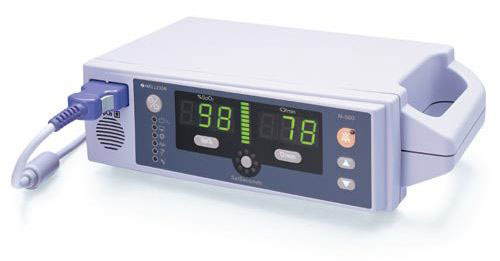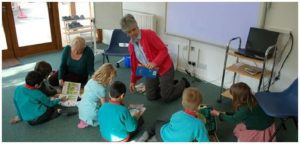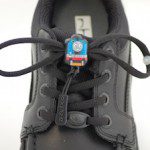Abbreviations in Special Educational Needs – what do they mean?
One thing you’ll notice about Special Educational Needs is the sheer number of abbreviations and acronyms you have to learn. What’s the difference between ASD and ADHD? What’s an EHCP? Should you be afraid of a COP? This guide should help you navigate…
(note: Where an abbreviation is written in initial lower case, it is usually pronounced as a word, for example it’s Senco, not ess ee en see oh).
ABA – Applied Behaviour Analysis is used to help children with autism, it looks at patterns of behaviour and tries to find causes, and ways of dealing with them or preventing them.
AD – attachment disorder (sometimes attachment behaviour disorder, or ABD). This is a range of conditions believed to be caused by trauma in early childhood, which can lead to behavioural problems in childhood and adult life.
ADHD – attention deficit hyperactivity disorder. This is a range of symptoms including impulsiveness, restlessness and finding it harder to focus than your peers. Because of the setting of school it is most often diagnosed during primary school age.
AR – Annual Review. All children with a statement of special educational needs (now an Education Health and Care Plan) have this provision reviewed once a year, to ensure it still meets their needs, or to see if it is no longer required. If progress is being made and the plan is right for the child without amendments, there may be a No Change Review (NCR).
APD – Auditory Processing Disorder – a child can hear ok medically, but is unable to process the meaning of words. Sometimes they can repeat words but without knowing what they are saying.
AS – Asperger Syndrome. A type of autism that generally involves higher functioning individuals who perceive the world in a way that most people would see as different. It is not associated with the learning delay or disabilities of other kinds of autism.
ASC – Autistic Spectrum Conditions. Many professionals now use the term “condition” instead of “disorder” to promote the idea that autism should not be a barrier to living a complete life, with necessary adjustments. See ASD.
ASD – autistic spectrum disorder, aka autism. This is a different way of perceiving the world around you. People with ASD often have difficulty reading emotions, making relationships or understanding social situations as easily as their peers, as well as a degree of learning difficulty. But as the word “spectrum” suggests, it covers a number of different levels of need, and conditions of varying severity.
ARE – age related expectations. If a child is working Below Age Related Expectations (BARE) they may have special educational needs.
BARE – see ARE
BESD Behaviour, Emotional and Social Difficulties (also known as SEBD or EBD) is a ‘catch-all’ term used for any condition that affects behaviour, emotions or social interactions. It
is used for a wide range of conditions and children.
BSP – Behaviour Support Plan. These are usually put in place by schools for children who have behavioural issues to assess their progress and outline expectations over a set period of time, for example a school term.
Camhs – Children and Adolescent Mental Health Services.
CIC – Child in Care. A child who is being looked after by (for example) a foster family after they have been removed from their parents by social services.
COP (or Cop) – Change of Provision. This is where a child moves from a special school to a mainstream school, or vice versa, because their needs (or the assessment of them) has changed.
CPAP (Cee-pap)- Continuous Positive Airway Pressure is a fan and a face-mask, that blows air at the child increasing the air pressure to open the airways of the throat. It is used for breathing difficulties such as heavy snoring, asthma, low blood oxygen levels (SATS) and sleep apnoea.
EAL – English as an additional language. This generally means young people for whom English is not their first language, who may speak another language at home.
EHCP – Education, Health and Care Plan. This is a plan to help a child who has special educational needs in school. They are replacing statements and will have entirely replaced them by April 2018. There is a good post here on navigating that process.
EP (or Ed Psych) – Educational Psychologist. These experts help assess the needs of children who may have special educational needs by observing children in their educational setting.
EYFS – Early Years Foundation Stage. This is school or nursery-based education from birth to the end of Reception, when a child is five years old.
G Tube
A Gastronomy tube way of feeding a child who has swallowing or difficulty eating. There is a tube through the stomach wall (known as a PEG) so that food and medicines can go directly into the stomach. It is a longer term alternative to NG Tubes.
HI – Hearing Impairment (or Hearing Impaired).
IEP – Individual Education Plan
An IEP is a plan or a program built to help a child achieve the targets outlined in an
EHCP. It is built around the curriculum that the child is following and uses strategies
tailored directly to the child.
KS – Key Stage. Education in England is divided into Key Stages – KS1 from 5 to 7 years old, KS2 from 7 to 11, KS3 from 11 to 14 and KS4 from 14 to 16.
LA – Local Authority.
LAC – Looked After Child. More common term nowadays is CIC or “child in care”.
LSA – Learning Support Assistant. These education professionals often work one-to-one with a particular child with SEN to develop a relationship and help with their learning, which may be particularly differentiated to their needs. They may also assist with physical needs eg toileting.
MLD – moderate learning difficulties.
NCR – No Change Review. See AR.
Neet (or NEET) – Not in Education, Employment or Training. Young people without qualifications are at risk of being Neet – where their options for work or education are limited.
NG- tube – A thin (often yellow) Naso-gastric tube that can be used short term for emergency food and drink when a child cannot eat. It goes through the nose, down the throat and into the stomach and requires trained use as there is a danger that the tube is in an airway and not in the stomach.
OT – Occupational Therapy (or Therapist). Day-to-day physical therapies for children who have disabilities or who may require recuperation from eg surgery.
Pecs (or PECS) – Picture Exchange Communication System. This is a way of using pictures to represent words, to assist children who have communication issues and autism.
PMLD – Profound and Multiple Learning Difficulties. These are children who require the most support in an educational setting.
PRU – Pupil Referral Unit. These are institutions which take “hard to place” children who may have severe SEN or behavioural issues, with the latter resulting in exclusion from a mainstream school.
SALT (or S<) – Speech And Language Therapy (or Therapist). These are professionals who help children, especially those with communication difficulties or autism.
SATS – oxygen saturations, often with ‘SATS monitor’ as seen on hospitals wards, they show a percentage indicating how much oxygen in the the blood. They can be small and portable or bigger when used for overnight monitoring. A home sats monitor can be bought here.

A typical SATS monitor used in NHS hospitals but can also be given to parents for overnight monitoring
SLT – Senior Leadership Team. At a school, this comprises the head teacher and assistant heads (plus principals, if it is an academy).
SEMH – social, emotional and mental health. This is a range of needs that can include behavioural problems and anxiety.
SEN (or Sen) – special educational needs.
Senco (or SENCO, or Sendco, or SENDCO) – Special Educational Needs (and Disabilities) Co-ordinator. These are qualified teachers who organise and co-ordinate a school’s SEN provision by working with other professionals, organising EHCPs and interventions etc.
SEND – special educational needs and disabilities
SWAN – Syndrome without a name
Children who doctors have been unable to diagnose with a specific condition are
often referred to as SWAN. These are usually children with a genetic disorder. A support charity called SWAN is here.
TA – Teaching Assistant. These professionals have a couple of roles: in the classroom they support the work of the class teachers, and they also teach small groups of children, particularly with interventions.
VI – Visual Impairment (or Visually Impaired).
Some of this information was taken from a printable glossary created by the Little Miracles charity which is available to download here
Little Miracles is a charity that supports children with disabilities and their families and siblings in the Peterborough area of UK.
Please suggest any acronyms or abbreviations that you have encountered in the comments.


